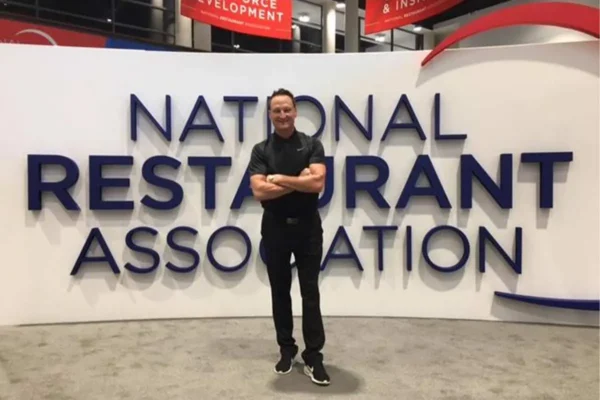First-time exhibiting outside the U.S. can be a fearful and test time for many exhibitors, especially as the approach to exhibiting across-the-pond can be totally different to what a U.S. exhibitor can be used to on home soil.
The first major difference is cost; the manufacturing, installation and dismantle of a U.K. and European booth is around 25 percent less than the expected cost for a U.S. booth. Generally, this is because the cost of labor is substantially less than within the U.S. This is because of the demise of the union control within tradeshows and exhibit houses.
It is now an acceptable practice for employees to be paid a set day rate, regardless of whatever day is worked. This removes costly overtime and weekend rates.
Exhibit employees in the U.K. also tend to be less specialized than their U.S. counterparts, and are expected to be carpenters, electricians and graphic installers. Again this is now an acceptable practice, as there is no union jurisdiction within tradeshow venues.
Obviously, this means when installing a booth, carpenters can not only build the booth, but install the electrical and fix graphics.
Therefore, there is no need for multiple laborers or waiting time for other trades to complete their roles.
European laborers also tend to be employed as a permanent work crew and it is rare to bring in outside vendors just to complete a project.
Generally, it is also a more common practice that when a project is fabricated in the workshop, the main carpenter will also be leading the crew member on-site while installing the booth. This creates a continuity that can assist in the speed of install and dismantle.
Another major saving is the lack of drayage in the U.K. The majority of U.K. and European exhibit houses have their own transport and will self load trucks from their own facility and deliver direct to the booth space prior to install.
A U.K. exhibit house will also offer a firm and fixed quote that includes build, I&D, graphics, electrical, etc., that are known prior to each project. This is often unlike a U.S. install where there are a multitude of cost variations until after the tradeshow is complete.
The style of booth construction in Europe is also totally different from the U.S. An American booth design tends to be a much more modular design with a more open feel to the overall booth. Many U.S. booths are a series of units that are set into a booth space with a minimal amount of linking structure. A feature banner above the booth with strong branding is also quite normal within U.S. tradeshows.
The booth is generally pre-built within a facility, and the weight factor of the booth is a major consideration relative to drayage charges at the final venue.
The overall concept is that the booth is a background for the exhibition staff and the selling aspect is more vigorous.
U.K. and European booths tend to be more structure led, especially since the weight of materials used have no direct effect on the final cost of the booth.
Although the booth is generally pre-fabricated within a facility, there is much more on-site build, enabling elaborate structures to be installed on a more regular basis.
In fact, in some European venues, booths are actually built from scratch directly adjacent to the booth space.
Finishes can also very different. A paint finish applied on-site is a much more common practice than within the U.S., where everything tends to be finished prior to assembly.
A European booth is also more visually prominent because the sales approach is much less aggressive for European exhibitors. This allows the booth to draw potential customers in, with the sales staff being in a more complimentary role.
In most European venues, bars and alcohol on the booth are the norm and an acceptable practice when talking with potential customers.
Two story booths are also very common in U.K. exhibits, which allow additional space within a booth for entertaining and meeting areas.
However, U.S. exhibitors should be aware that many tradeshow organizers in the U.K. will charge a percentage-based fee determined by the overall measurements for a two story structure. Also, in some venues, especially throughout Germany, there is a requirement to provide a water sprinkler system for any two story structure.
After a tradeshow, be it in the U.K. or mainland Europe, the booth is generally returned to the booth builders’ facility for storage for the next show and storage charges will apply.
When choosing a partner within the U.K. and Europe to handle a particular project, it is important to look into the actual experience and size of the exhibit house, as many exhibit houses sell themselves as international companies, but they are just two or three people operating from a very small facility.
It is also worthwhile to check and see what partnerships they have with like-minded exhibit houses, or if they are part of any alliances, such as The Global Exhibit Alliance.
Last, but not least, try to choose an exhibit house that has worked throughout the U.S. This will enable the chosen exhibit house to understand the American approach to exhibiting, and then offer a solution that links both the U.S. and the European approach.
Chris Murphy is the CEO and principal at The Iguana Group, a United Kingdom-based exhibit company.
| Home |
| People on the Move |
| National News |
| Regional News |
| Features |
| Tradeshow Calendar |






























